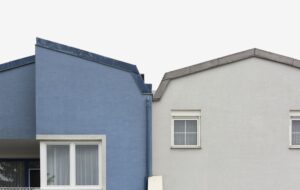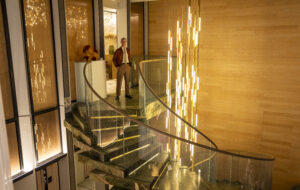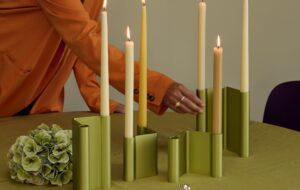

words Tom Dyckhoff
Why can’t Britain put together a decent architecture exhibition? Even a magnificent subject like Zaha gets slapdash treatment.
I don’t often get excited about British architecture exhibitions these days. Too much heartache – like an England game, a lot of guff beforehand, nothing but Kleenex after. But I was really rooting for this one. This is Zaha. La Hadid. A lady, you’d think, who’d be an absolute gift to a curator. More front than Blackpool, a right gob on her and infinite acres of hinterland.
Think of what an exhibition on her could contain: gender politics, her Iraqi background, the new geometry, the engineering of her once seemingly impossible structures, her incredible PR savviness, her sartorial choices (which, just to head off any feminist critique of my mentioning clothes in relation to a female architect, in her case are vital weapons in her armoury). And this at a time when Hadid is experiencing her heyday of heydays, building everywhere from Kirkaldy to Cagliari – even here in her adopted home, after three decades as its architectural prophet without honour. Her Serpentine Gallery “pre-pavilion” sheltered the ungodly social mix of Geri Halliwell and Dennis Hopper at the gallery’s summer party. Better than that, she’s been freshly ennobled with that ultimate coming-of-age VIP pass straight into the British artistic firmament – one hour of pure primetime ITV on the South Bank Show. So this exhibition, the first of any scale on Hadid in Britain, and after 30 years of hurt (Cardiff and all that), should be landmark, headline-grabbing stuff.
The inevitable gloom, though, sets in somewhere towards the back, in the crepuscular reaches of the Design Museum’s enervating first-floor gallery. A huge wall is lit with a long succession of projected images of her projects. They are not labelled. Well, no, they were labelled. Only at the beginning of the sequence, about seven hours ago. Is the visitor supposed to have engraved the labels on their retina? Maybe we’re intentionally meant to immerse ourselves in the work, unburdened of such troublesome things as words, to drink in Hadid’s world-conquering, acontextual designs.
What is it with architecture exhibitions in Britain? When was the last time you saw one that wasn’t nudging the dizzy heights of mediocrity? Is it the money? I know we don’t get much in the way of government handouts for architecture shows, like the Dutch or the French. Do we lack the Americans’ nous for schmoozing corporate fatcats? Is it the expertise? Curating a show in which the subject isn’t actually in it is habitually trotted out as the “difficulty with architecture exhibitions”. But that doesn’t seem to stop them on the other side of the Channel.
The label incident isn’t just one small irritation. Setting aside the exhibition’s lack of such luxuries as any energy at all, let alone curatorial direction (it’s just boards on walls and models – admittedly exquisite boards on walls and models – and a sparse chronological narrative). But the biggest crime of all, one too common to British architecture exhibitions, is not setting Hadid into any kind of context – except for a cursory mumble that she started out at the Architectural Association in the midst of a deep recession in the mid-Seventies. Anyone turning up not knowing much about her is pretty much left at the mercy of the work.
A good job, then, that this is stupendous. Inevitably with one so stellar, the snipers have emerged, painting Hadid as just another wilfully, stupidly iconic architect. But just one glimpse at the dazzling visual worlds she creates – in the 1980s with her paintbrush, today with CAD flythroughs and jewel-like models, all here – instantly distinguishes her from any corporate iconic cheeseball. Her early 80s designs for The Peak in Hong Kong, or for a building on Trafalgar Square, are rammed with enough ideas for a condensed super-modernist architecture (this at a time when all around were building historicist pediments) to act as career rocket fuel ever since. It’s taken 30 years for engineering, and clients, to catch up, and in Britain the trail she blazed has been filled only by the vacuum of polite neo-modernism. Hadid’s architecture has never been polite.
Her work is loaded with potential – her obsession with shadow and ambiguity is deeply rooted in Islamic architectural tradition; her fluid spaces are a politically charged riposte to undemocratic modern urban landscapes – but, unlike others of her generation, Daniel Libeskind, say, or Rem Koolhaas, she wears such allusions and politics guardedly. It needs a curator of skill to winkle them out. A few labels might help too.
Zaha Hadid is at the Design Museum, London, until 25 November www.designmuseum.org
















